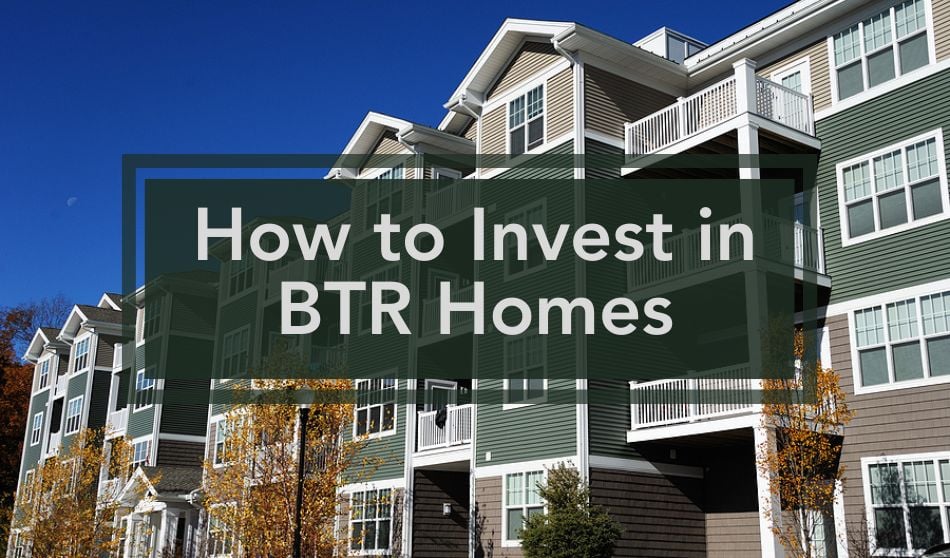
[ad_1]

Investing in build-to-rent homes offers stable returns amid rising housing prices. These purpose-built rentals attract diverse tenants and provide the benefits of single-family living without ownership hassles. To succeed, conduct thorough market research, define investment goals, plan finances, choose reputable builders, and ensure legal compliance. Tailor designs to tenant preferences, secure suitable financing, manage construction efficiently, market effectively, and consider property management options for long-term success.
With the prices of homes still out of reach for many, more and more people are settling for the next best option: to rent until they can afford to buy. But for those looking for a flexible lifestyle, with no maintenance commitments and costs, and the comfort and privacy offered by living in a house, there’s a great in-between: built-to-rent homes. And if you’re looking to invest, now is a great time to take advantage of the opportunity since it can provide stable, long-term returns. This comprehensive guide will walk you through the essential steps, considerations, and strategies to navigate the build-to-rent investment landscape successfully.
Understanding Build-to-Rent Homes
Build-to-rent homes (BTR), also known as single-family rentals (SFR) or purpose-built rentals, are residential properties specifically designed and constructed for renting rather than selling. BTR homes often have similar characteristics to single-family homes, and most commonly include features that aren’t typically offered with multifamily properties such as private yards, dedicated parking spaces, and a more residential, community-oriented feel. In fact, most BTR developments form communities of 50 or more homes or townhomes and typically have community amenities along with an on-site leasing office.
It’s also worth noting that BTR homes are filling the housing shortage because the rents are comparable to traditional apartment leases in similar size and quality. For investors, this means it’s not hard to find renters. Plus, BTR homes have a lower turnover rate making it an even more desirable investment opportunity.
Who Lives In BTR Homes?
With the demand for flexible, high-quality rental options on the rise, BTR homes stand at the intersection of convenience, lifestyle, and contemporary living trends. BTR homes are ideal for seniors, singles, and families. For seniors and empty nesters who are ready to give up the hassles associated with homeownership, BTR homes offer more financial flexibility. BTR homes are also an appealing option for singles who want a community but also privacy. But seniors and singles aren’t the only ones who are benefitting from BTR home. For those who can’t afford to buy a home just yet, BTR homes are a good alternative. And for families, BTR homes are attractive because they often include a backyard space which is ideal for raising kids.
How to Invest in BTR Homes
If you’re an investor who wants to take advantage of the growing trend of BTR homes, here are the steps you need to take to set yourself up for success.
1. Market Research and Location Selection
When venturing into built-to-rent homes, begin by conducting thorough market research to identify areas with high demand for rental properties. Consider factors such as population trends, job growth, and local economic indicators. Evaluate potential locations based on rental market stability, rental yield, and future growth prospects. This preliminary analysis allows you to assess potential locations based on their rental market stability, projected rental yield, and future growth prospects, forming the foundation for a strategic investment decision.
2. Define Your Investment Goals
Once you’ve completed your research, it’s time to clearly define your investment goals. Take the time to reflect on whether you’re pursuing a steady monthly income, long-term appreciation, or a balanced combination of both. A good understanding of your investment objectives serves as a guiding force, influencing your property selection and shaping a coherent investment strategy. With well-defined goals, you can align your choices with the outcomes you desire, ensuring that your investment in built-for-rent homes is tailored to meet your specific financial aspirations.
3. Financial Planning and Budgeting
Establish a realistic budget that covers not only the construction costs but also additional expenses such as land acquisition, permits, and potential property management fees. A thorough financial plan not only provides a clear overview of your investment but also helps you make informed decisions and navigate potential challenges. By accounting for all essential expenses from the outset, you can position yourself to manage the project more effectively, so that your investment remains financially sound.
4. Choose the Right Builders and Developers
Selecting experienced builders and developers is crucial for the success of a build-to-rent project. Seek out professionals with a proven track record in constructing residential properties, particularly those specifically designed for rental purposes. Also, be sure to evaluate their portfolio, reputation in the industry, and commitment to maintaining high-quality standards. By opting for seasoned builders and developers, you will enhance the likelihood of your project meeting or exceeding expectations, ensuring that the built-for-rent homes are not only well-constructed but also attractive to potential tenants.
5. Legal and Regulatory Compliance
Navigate the complex landscape of legal and regulatory requirements associated with build-to-rent projects. You must maintain compliance with zoning laws, building codes, and any specific regulations governing rental properties in your chosen location. To do so, consider consulting with legal professionals specializing in real estate and property development. They can provide expert guidance, helping you understand and address potential legal challenges, mitigate risks, and can help you rest assured that your build-to-rent project aligns seamlessly with the prevailing legal framework.
6. Design Considerations
To maximize the appeal and functionality of your build-to-rent homes, aim to focus on tenant-centric design. Consider features that attract tenants, such as energy efficiency, modern amenities, and flexible living spaces. The reason for this is simple: Tailoring the design to meet the preferences of your target demographic enhances the property’s rental appeal. By tailoring the design to align with the preferences and lifestyle needs of your target demographic, you’ll create a living space that stands out amongst other rentals, contributing to higher occupancy rates and long-term tenant satisfaction.
7. Financing Options
Explore financing options for your build-to-rent project, considering traditional mortgages, construction loans, or alternative financing sources. In order to secure the most favorable financing arrangement for your investment, be sure to compare interest rates, loan terms, and down payment requirements. A well-informed financing decision can significantly impact the project’s feasibility, ensuring it aligns with your budget and contributes to the overall success of your build-to-rent venture.
8. Construction and Project Management
Efficient project management is crucial, especially during the construction phase. Regularly monitor progress, adhere to timelines, and address any issues promptly. A well-managed construction process will ensure your build-to-rent homes are completed in time and will minimize potential setbacks.
9. Marketing and Tenant Acquisition
After construction is complete, develop a robust marketing strategy to attract potential tenants. Leverage various digital platforms, real estate listings, and local marketing channels to showcase the unique features of your build-to-rent homes. Implementing a comprehensive marketing plan will enhance visibility and attract potential tenants to your build-to-rent homes. Simultaneously, establish a tenant screening process so that you attract reliable tenants.
10. Property Management
Think about whether you will manage the property yourself or prefer a professional property management company to do so. Property managers can handle tasks such as tenant screening, rent collection, and maintenance, so you can use your time to focus on other priorities. Ultimately, the decision between self-management and hiring a property management company depends on your availability, expertise, and preference for a hands-on or hands-off approach in overseeing the day-to-day operations of your build-for-rent homes.
11. Long-Term Maintenance and Upkeep
Last but certainly not least, you’ll want to implement a proactive maintenance strategy to preserve the value of your build-to-rent homes over the long term. Regular inspections allow you to identify any issues early on, addressing them before they escalate into larger problems. Timely repairs help you make sure the property remains in optimal condition, minimizing the risk of deterioration and maximizing tenant satisfaction. Additionally, maintaining open and responsive communication with tenants regarding maintenance concerns leads to positive landlord-tenant relationships. One thing is clear: by prioritizing proactive maintenance measures, you can protect your investment and ensure the sustained success of your build-to-rent homes in the rental market.
Starting Your Journey
The steps above provide a roadmap for navigating the complexities of build-to-rent investments. As the demand for rental housing continues to grow, the careful implementation of these steps can unlock the potential for stable, long-term returns and contribute to the overall success of your build-to-rent investment journey.
[ad_2]





